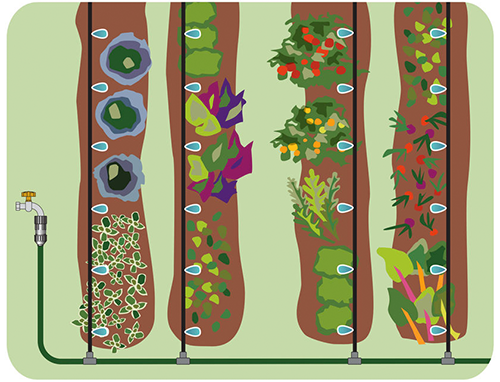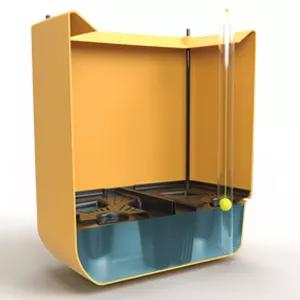Soak, Drip or Spray: How to Choose a Watering System
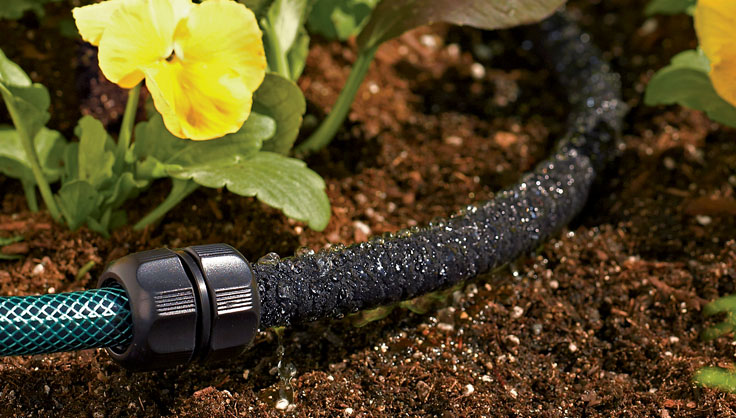
There's no way around it — your garden will need water to thrive. Is your head swimming with all the types of watering systems? Understand how different watering systems work and you'll be able to pick the right one for your garden. Let's dive in.
In This Article
Garden Watering 101
How often do I need to water my garden?
Watering needs will vary depending on the type of plant, age of plants (seedlings need water much more frequently than mature perennials), type of soil (sandy soil dries out much faster than heavier soils) and of course, the climate and daily weather. A good way to tell if your garden is lacking moisture is to simply push away any mulch from the soil surface, and then poke your finger down into the soil. Even if the top inch of soil is dry, the lower soil should be moist.
How can I tell if my plants aren't getting enough water?
Immediate heat stress generally looks like limp leaves and wilting plants. Under a long term drought, you may see undersized or shriveled fruit, tough or bitter -tasting harvests, or plants that are just plain dead.
How can I keep my garden watered while I'm away on vacation?
For raised beds and in-ground gardens, install a programmable timer at your water source, and connect it to a sprinkler, drip, or soaker hose system. For maximum water conservation (and minimal water loss!), set the timer to water during morning or early evening hours. For containers and planters, consider moving your plants into a self-watering container. Fill the water reservoir before you leave, and water will slowly transfer into the soil over time.
How often should I water my seedlings?
When the seeds are just beginning to germinate, before they have true leaves, you'll want to mist the surface of the grow medium regularly, and once they are more developed, you can bottom water them in a seed tray.
Soak
Soaker hoses have hundreds of tiny pores along their tubing that drip water slowly and at a low pressure. This allows water to gently seep into the ground at an even rate, getting water directly into the soil and roots. Foliage stays dry (which prevents disease) and no water is wasted. The Snip-n-Drip Soaker Hose System uses a soaker hose to provide the slow, deep watering that plants love. By alternating sections of soaker hose and standard garden hose, you can quickly set up a watering system that applies water where you need it and not where you don't. Place the soaker hose next to plants, and use the garden hose to cross paths, patios, and other areas that don't need water.
Best for: Just about every type of garden! Place in a raised bed, coil around newly planted trees and shrubs, or weave through a perennial bed.
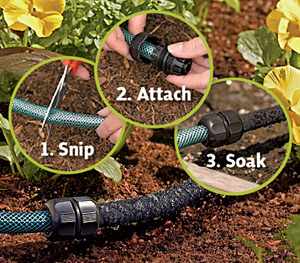 How the Snip-n-Drip connectors work
How the Snip-n-Drip connectors work
Drip
Drip irrigation systems consist of long tubing with evenly spaced openings that water weeps out. Like soaker hoses, an irrigation system is incredibly efficient at getting water right into the soil, minimizing loss due to evaporation. The WaterWell Drip Line Kit is a complete, customizable kit that provides consistent drip action for up to four 25-foot rows. The unobtrusive, small-diameter water line has precise perforations at 12-inch intervals. Simply cut the drip line to the lengths you need and arrange along rows, positioning the perforations to apply water to individual plants.
Best for: Garden spaces organized in long, straight rows.
 Use our Original Ultimate Hose Nozzle
Use our Original Ultimate Hose NozzleSpray
Garden hose nozzles, sprayers, and watering wands are essential tools for anyone who loves to garden. Hose nozzles and watering wands are budget-friendly and ideal for basic watering. Nozzles can be attached to standard garden hoses, and offer a range of spray patterns and water pressure settings, allowing you to customize the water flow to suit the garden space. Similarly, sprayers come in different types, including backpack sprayers, hand-held sprayers, and pump sprayers. Sprayers can be used for applying insecticides and liquid fertilizers, in addition to watering houseplants and container gardens.
Best for: Containers, houseplants, smaller garden spaces, and brand new gardeners.
Sprinkle
Sprinkler systems are great at broadcasting water over a large area. The systems can simply be long hoses with sprinklers along the length or a center-pivot system that waters in a circle. They may not be as efficient as a drip irrigation or soaker hose system, but sprinklers are generally very budget-friendly, widely available, and ideal for large spaces. Oh, and incredibly fun to run through on a hot day!
Best for: Large spaces that need gentle moisture like a newly seeded meadow or lawn.
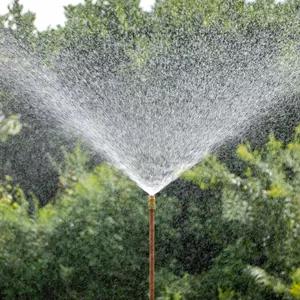 Use our Hi-Rise Lifetime Sprinkler
Use our Hi-Rise Lifetime Sprinkler
Fill
Got a container garden (or two)? Then you'll want to check out self-watering containers. Self-watering containers work on a reservoir system, making them incredibly convenient AND efficient. There is a water storage tank, usually at the bottom of the container, which you fill after potting up your plants. The soil soaks up the water from the bottom — as long as the reservoir is filled, the plants above will receive a consistent dose of water. Because the water is stored out of the sun and wind, it evaporates slowly and with less water loss than if you sprayed water on your plants.
Best for: Gardens in especially hot climates, plants the require consistently moist soil (like tomatoes), or well-traveled gardeners looking to keep plants well-watered while out of town.
Conserving Water in the Garden
The heat is on. A rapidly changing climate is spurring gardeners to change how and what they grow. Here are a few tips to help your garden thrive in hotter times.
- Mulch. Mulching with either weed-barrier fabrics or natural mulch (woodchips, straw, etcetera) prevents water from evaporating and weeds from drinking the water that your garden plants could use.
- Compost. Add compost to the soil, which improves its ability to supply your plants with just the right amount of water. Sandy soil is very porous — water will run right through it — amending with compost will make the texture more spongy and water-retentive.
- Collect. Install a rain barrel to collect and store water during times of surplus rain. Residential rain barrels come in all shapes, sizes and colors and are designed to intercept and store runoff from rooftops. These barrels may also have spigots that you can use to fill a watering can with or attach to a hose.
- Time it right. Water in the morning, when there is a better chance of the water going into the soil instead of being evaporated by the hot midday sun.
- Pause fertilizing. Feeding plants encourages thirsty, tender, new growth — the more a plant grows, the more water it needs.
- Pick proper plants. Choose drought-resistant perennials, trees, and shrubs that are naturally adapted to dry conditions.
Last updated: 02/19/2025
Print this Article:
Get the Dirt
Stay up to date on new articles and advice. Please fill out the information below.


